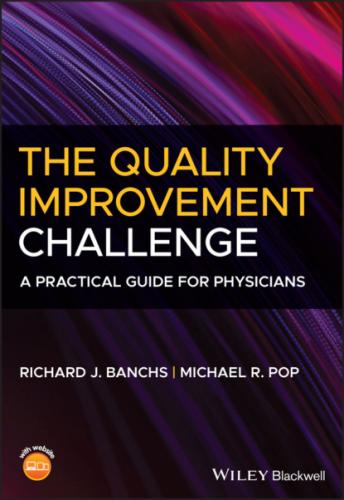The Quality Improvement Challenge. Richard J. Banchs
or end users to understand the problem; learn about their experiences and understand their expectations. Collect the voice of the people that “do the work.” Understand their needs. What are their challenges? What barriers prevent them from meeting the customers’ expectations? Summarize the resulting insights into a clear explanation of the problem you are trying to address. This phase will help your team focus on the right issues.
The fourth “R”: The Right Cause. The first step in finding the cause is to “go see.” Understand how work is really done. “Walk the process” to identify areas of improvement. Eliminate waste where you can see it. Once you understand the process, select the measurements that matter. Define your metrics and collect baseline data. What is our baseline performance? Can we meet our customers’ needs? Are we meeting our customers’ needs? How often are we meeting these needs? Organize and stratify your data and use your process knowledge to discover the most likely cause of the problem. Then test your assumptions and confirm the cause‐and‐effect relationship.
The fifth “R”: The Right Solution. Use tools to energize your creative thinking. Generate a list of improvement ideas. Evaluate your options and prioritize the best solution. Create low‐fidelity mock‐ups and work with the end users and frontline stakeholders to test your ideas. Make this process iterative. Modify and refine the original idea as needed by uncovering performance gaps that need to be addressed. Learn from your testing. Once you have a winner, roll it out with the support of the key stakeholder who will be implementing it over the long term.
These five phases may be iterative and overlapping, require the completion of several steps, and end with project deliverables as shown on the Project Checklist (See Table 2‐1). Starting after the second phase and continuing throughout the project, the QI team should meet with the Primary Sponsor for a tollgate review (see Chapter 24). A tollgate review is a go/no‐go decision point where project activities and deliverables are reviewed to assure that the project is on track. Likewise, after each step, the QI team should plan for communication with the frontline stakeholders. Effective communication is a critical aspect of any quality improvement project and is recognized as a key component of behavior change in any change management effort (see Chapter 25).
TABLE 2‐1 THE QI PROJECT STEPS CHECKLIST
| Project Steps | |
|---|---|
| Phase | Steps |
| The Right Project | Identify project opportunities (Chapter 3) |
| Assess & confirm project feasibility (Chapter 3) | |
| Write a Problem Statement (Chapter 4) | |
| Create a draft of your Project Charter (Chapter 4) | |
| The Right People | Identify your Primary Sponsor (Chapter 5) |
| Organize a QI team and choose a team leader (Chapter 6) | |
| Complete first tollgate review (chapter 24); Communicate with front line (Chapter 25) | |
| The Right Problem | Set a “kick‐off” date and launch the project |
| Define the scope and boundaries of the project (Chapter 7) | |
| Validate the Voice of the Customer (Chapter 8) | |
| Get the Voice of the Stakeholder (Chapter 9) | |
| Complete the final draft of your project charter | |
| Complete second tollgate review (Chapter 24); communicate with front line (Chapter 25) | |
| The Right Cause | Go see at the “gemba” and create a Process Map (Chapter 10) |
| Quick wins: identify and eliminate “waste” (Chapter 11) | |
| Measure what matters: select key project metrics (Chapter 12) | |
| Plan data collection and collect baseline data (Chapter 13) | |
| Define baseline process performance (Chapters 14–17) | |
| Identify and prioritize the most likely cause (Chapter 18) | |
| Confirm the cause & effect relationship (Chapter 19) | |
| Complete third tollgate review (Chapter 24); Communicate with front line (Chapter 25) | |
| The Right Solution | Develop, filter, and prioritize improvement ideas (Chapter 20) |
| Test the effectiveness of your ideas with a pilot (Chapter 21) | |
| Target and improve flow and work conditions (Chapter 22) | |
| Create an implementation plan (Chapter 23) | |
| Roll out the full‐scale change(s) (Chapter 23) | |
|
Create and begin | |
